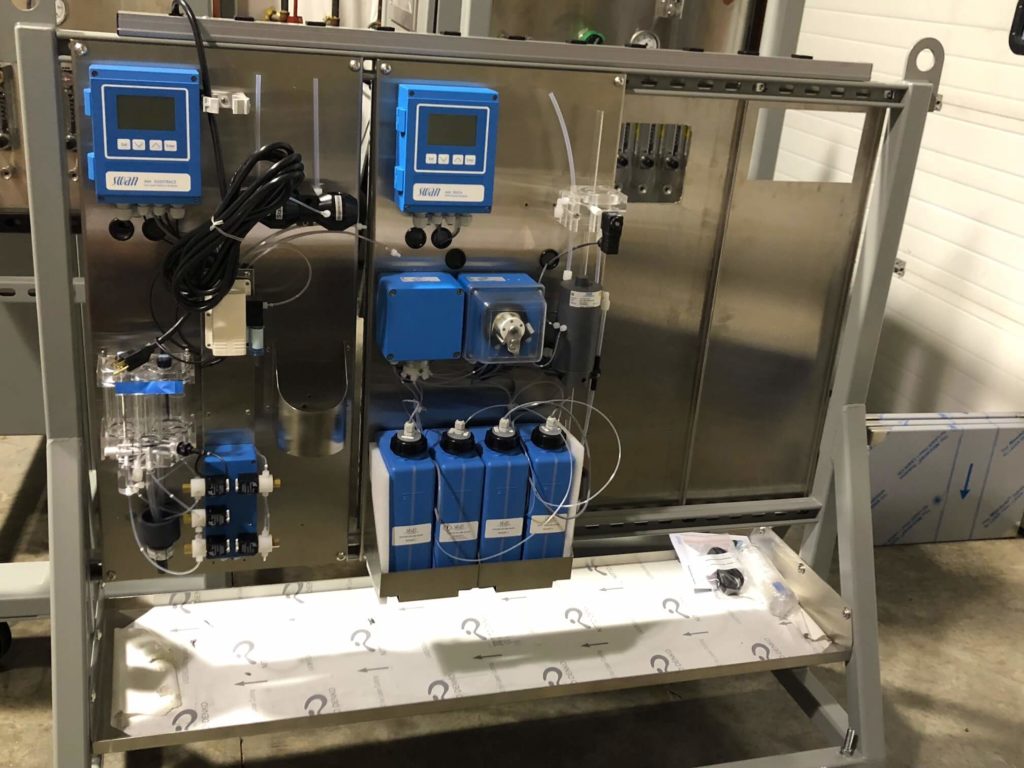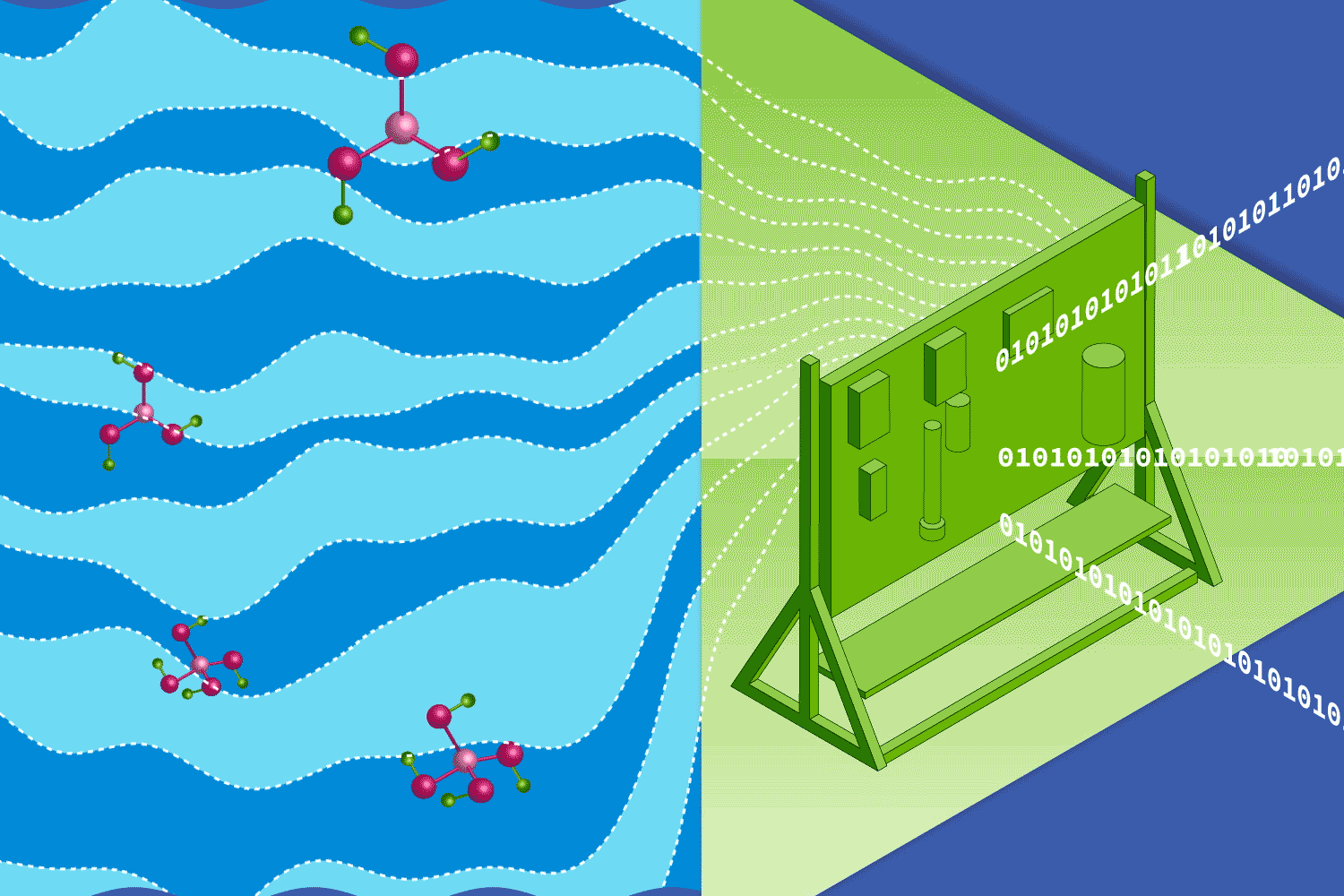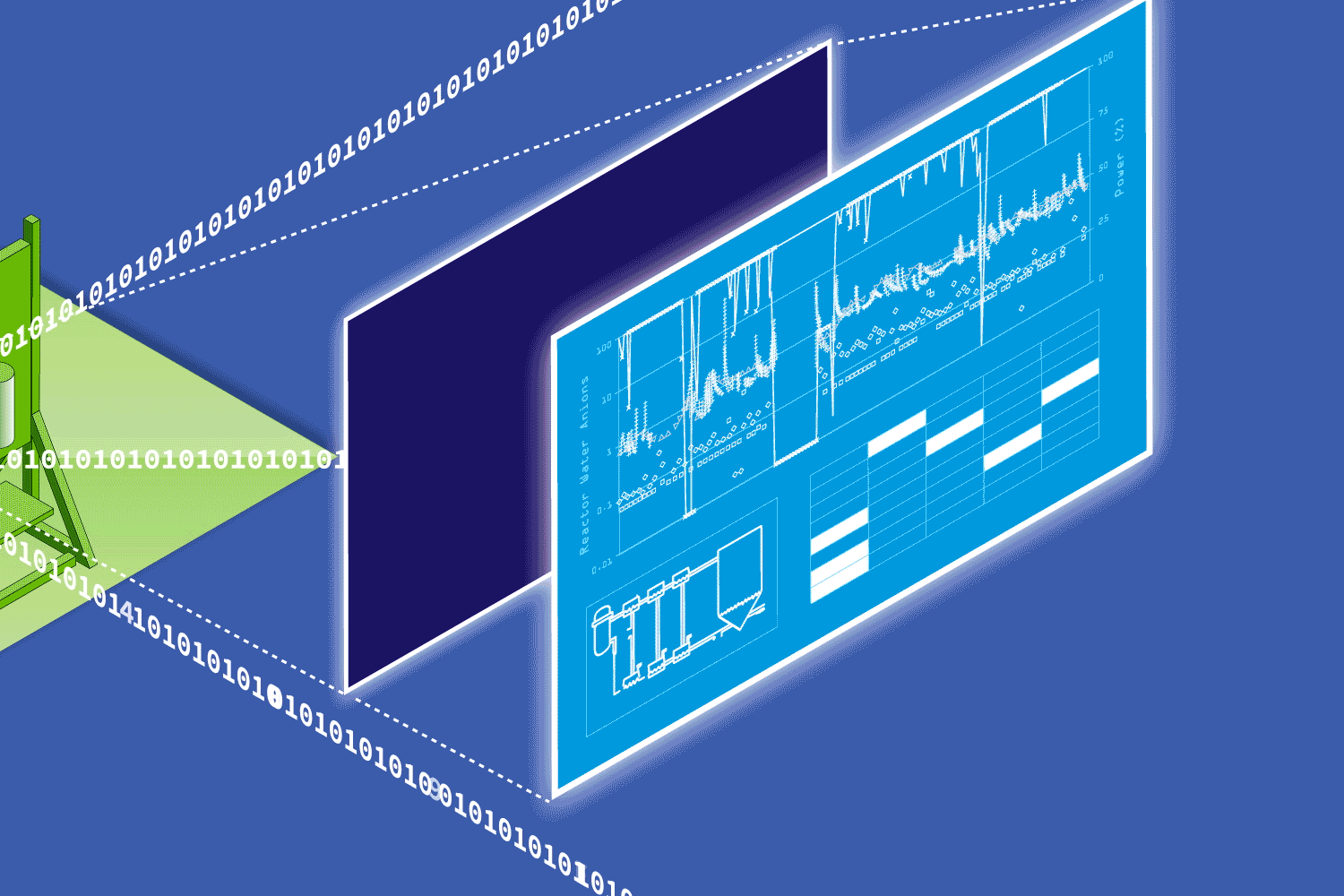Field Demonstration Pursues Better Information with Fewer Resources
Forty years ago, when many of the nuclear power plants in the United States began operating, plant water chemistry was monitored by technicians who drew water samples manually, then walked them back to the laboratory for analysis, trending, and recording. This occurred at regular intervals, ranging from every 4–6 hours to once a day to once a week, depending on the parameter or chemical being measured.
For the most part, it’s still done that way, relying on significant resources while providing infrequent data that requires assumptions and informed guesses about conditions between measurements. Conservatism is built into operational guidelines to help compensate for an incomplete picture of water chemistry.
All that could change with EPRI’s Smart Chemistry initiative, which has slated a major demonstration in 2018. “If we can send a rover to Mars to pick up samples, do chemical analysis, and beam the results back to Earth, we should be able to automate nuclear water chemistry,” said EPRI Senior Program Manager Lisa Edwards. “We are on the verge of a new era in water chemistry. Through automation and smart analytics, we can provide better information with fewer resources and rethink our operational guidelines.”
Smart Chemistry addresses the three main objectives of water chemistry control in nuclear power plants:
- Materials integrity—prevent degradation of the metals in the reactor pressure vessel, piping, steam generator, and other key components.
- Fuel reliability—optimize fuel performance and protect the fuel cladding.
- Worker safety—reduce radiation fields outside the reactor core.
While the important constituents are currently monitored (see sidebar), the frequency of sampling remains an obstacle to more detailed knowledge of water chemistry. Consider two manual measurements of chemical X taken one week apart that are quite different—the first low, the second high. Which is more indicative of the plant’s chemistry? Is the first an outlier? Is the second a brief spike?
“With nothing else to go on, we have to make the most conservative assumption that the level of chemical X was high the entire week,” said Joel McElrath, project manager of the Smart Chemistry Initiative. “If we increased the frequency to hourly or daily, we’d have a much better picture of how things are changing, and the accuracy of assumptions would improve. However, more frequent manual sampling requires more labor and becomes cost-prohibitive.”
That’s where smart chemistry comes in. Its automated sampling provides better information without expending additional resources.
“With more frequent data, you have a better picture of reality,” said Dan Wells, who manages EPRI’s Chemistry Program. “You can better understand your margin for harming plant materials, impacting fuel operations, and increasing radiation fields.”
“In many cases, the real concern is about the condition of plant materials, which are not affected by just one event,” said Edwards. “They are affected by prolonged exposure to contaminants. But because we still take samples periodically, we have to assume the worst about what happened between the samples. The path forward is automation, which provides more frequent sampling and minimizes the need to make those assumptions.”
2018 Demonstration of Smart Chemistry Automation
After years of planning by EPRI and its utility members, a comprehensive demonstration of water chemistry automation is now underway. Researchers have built three skids, each about 4.5 feet long and 1.5 feet wide and capable of housing up to eight instruments for automated inline measurement of various chemicals and parameters.
Each skid operates independently. One measures water streams from the reactor coolant system, one is for the steam generator blowdown system, and one is for the main feedwater system. On each skid, the water stream flows through a line with branches to each of the instruments.
Additional equipment on the skid will capture and analyze the readings. For future applications, the skids will be connected through wires and wireless technology with the plant’s data acquisition system.

In 2018, the three skids will be tested in up to four power plants, beginning with the Salem Nuclear Power Plant in New Jersey. After completing a two- to three-month demonstration at Salem, EPRI plans to move the skids to other plants in pairs or individually.
“The purpose of the demonstration is to prove to the industry, including new nuclear power plant designers, that the current state of technology is sufficient to generate the water chemistry data and analysis that plants need for reliable operation,” said McElrath. “It will allow us to see these instruments perform in operational power plants, identify the instruments’ shortcomings, and then develop any needed improvements.”
Paul Frattini, EPRI senior technical executive, led the effort to identify and purchase the demonstration’s inline instruments. “We pulled together industry experts and walked through every instrument and measurement required for water chemistry control,” he said. “We made sure that we could buy the instrument and that it could make the required measurement inline. If such an instrument was not commercially available, we explored or developed alternatives.”
A key objective is to examine the cost of maintaining the instruments. “Twenty years ago, some nuclear utilities bought ion chromatography instruments for water chemistry analysis and deployed them for field trials. They required a lot of staff time for maintenance and were not cost-effective,” said Wells. “In our demonstration, we’ll collect information on the maintenance costs of these instruments. If some require too much care, we’ll innovate to drive the maintenance cost down.”

Analytics and Guidelines
For automated water chemistry data collection to be useful, the data must be processed and analyzed.
“Automation is just the first part of it,” said Edwards. “As instruments and sensors collect a flood of data, you need smart analytics to interpret the information. This enables plants to identify incipient events earlier and take action faster.”
Smart analytics also can bring a more integrated perspective to water chemistry. “We will be able to look at multiple parameters at the same time,” said Wells. “Rather than focusing on whether the levels of individual chemicals reach thresholds, we may be able to rely on a combination of factors—the cumulative exposure to multiple chemicals over a longer period. In addition, we may find that we don’t need to monitor all the things we used to.”
An Opportunity to Reimagine Chemistry Guidelines
Today, most of the nuclear industry uses EPRI’s water chemistry guidelines, which are based largely on thresholds. “Our operating experience and engineering analysis tell us that exposure to certain contaminant levels over a certain period can lead to degradation of plant materials,” said Edwards. “Currently, the EPRI chemistry guidelines contain limits based on concentration thresholds, also known as action levels. So, for a plant sample in which a contaminant exceeds a certain concentration, a specific action is taken. ‘Action level one’ may be to clean up the contaminant. Higher levels may involve reducing the plant’s power.”
“With better information and analytics, we may be able to reimagine the water chemistry guidelines,” said Edwards. “In some cases, it may be more suitable for the limits or action levels to be based on an ‘integrated exposure’ to many chemicals over a longer time, rather than on a single sample or limited set of samples. Advanced analytics could be used to calculate such an exposure. For example, a plant that operates for an entire fuel cycle with very low contaminant levels may be well-protected even if a short-term elevation occurs.”
“With automation technology combined with data analytics, we can discern combinations of impurities developing across the plant and indicating a risk to materials, fuel, or radiation management,” said Frattini. “Based on such patterns, the guidelines could signal a set of actions to correct the situation.”
The Path Forward to Smart Chemistry
Next steps for the Smart Chemistry Initiative include incorporating lessons from the demonstration, closing technology gaps, working with vendors to fine-tune the instruments, developing a cost-benefit analysis, optimizing maintenance, enhancing analytics, and revising water chemistry guidelines.
A full-scale demonstration and rollout of automated water chemistry are targeted for 2021. “We’re going to do a final demonstration in 2021, applying everything we have learned since this year’s demonstration—optimized instrumentation, improved analytics, and more effective operational guidelines,” said McElrath.
“The purpose of this three-year project is to apply better information to water chemistry control with fewer resources,” said Edwards. “We’re approaching this comprehensively, with a methodical plan and a solid vision. The project pursues the nuclear industry’s important objective of reducing cost, and it puts us on a path to have better water chemistry information on which to base operational decisions.”
Key EPRI Technical Experts:
Lisa Edwards, Dan Wells, Joel McElrath, Paul Frattini
For more information, contact techexpert@eprijournal.com.
Additional Resources:
- Boiling Water Reactor Vessel and Internals Project, Volume 1: Boiling Water Reactor Water Chemistry Guidelines—Mandatory, Needed, and Good Practice Guidance and Volume 2: Boiling Water Reactor Water Chemistry Guidelines—Technical Basis
- Pressurized Water Reactor Primary Water Chemistry Guidelines: Revision 7, Volumes 1 and 2
- Pressurized Water Reactor Secondary Water Chemistry Guidelines: Revision 8
- Closed Cooling Water Chemistry Guideline: Revision 2
- Open Cooling Water Chemistry Guideline
- Demonstration of Microchip Capillary Electrophoresis for Chloride and Sulfate Analysis
- Advanced Nuclear Technology: Using Technology for Small Modular Reactor Staff Optimization, Improved Effectiveness, and Cost Containment
- Advanced Nuclear Technology: Assessment of Automation Technologies to Reduce Chemistry and Radiochemistry O&M Costs
- Online Iron Analysis: An Assessment of Possible Technologies—Pressurized Water Reactor Chemistry Technical Strategy Group
Artwork by David Foster Graphics




